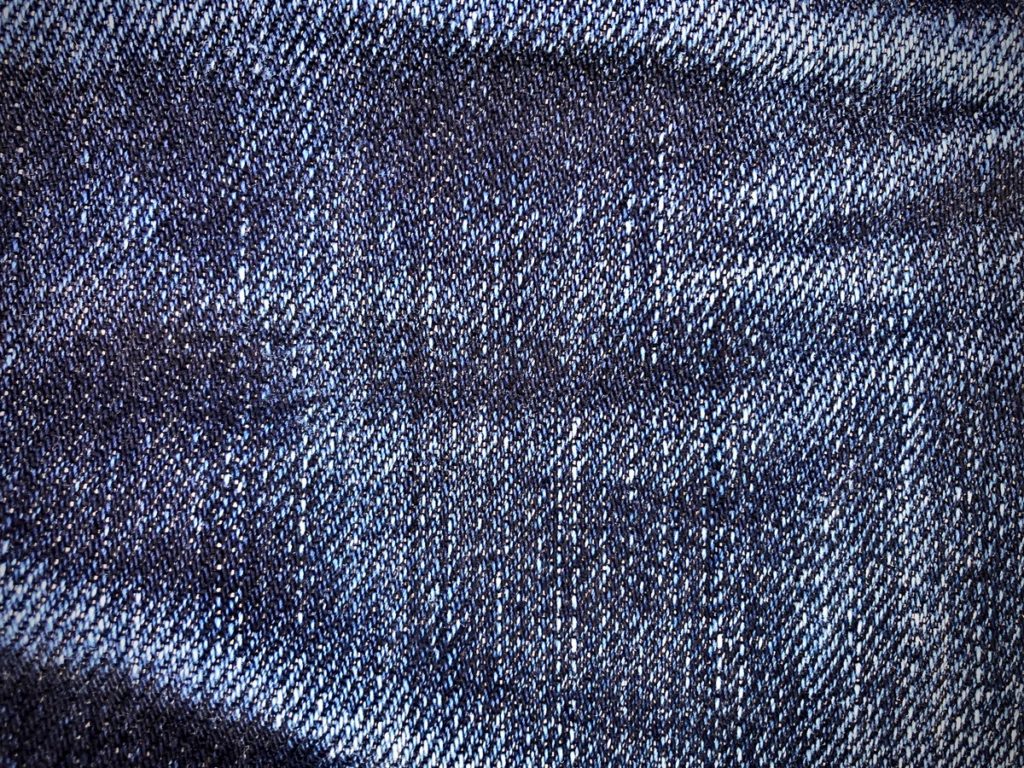This Encyclopedia entry is a must-know term. Learn more in our Denim vocabulary.
Denim is a type of woven twill fabric, usually made from cotton.
It consists of two yarns that are woven together. The yarn that runs across—known as the weft—is threaded over and under the yarn that runs downwards, which is called the warp.
Denim is usually yarn-dyed with indigo. That means the warp yarns are dyed before they’re woven into denim, while the weft yarns are left undyed or bleached.

This allows makers to only dye one set of yarn, the warp. That is why denim is blue on the front and white on the back.
However, with the advancement of alternative dyes such as sulfur, the definition of denim can be stretched to include garment-dyed twills as well.
Types of twill used for denim
There are different types of twill. For denim, the most common type of twill is 3×1 right hand twill (pronounced ‘three by one’).
‘3×1’ tells you that, on the fabric’s face (i.e. its front), you have three warp yarns for every weft yarn. Technically speaking, this means denim is warp-faced. It also explains why denim has diagonal lines in the fabric, known as twill lines.
‘Right hand’ tells you that the twill lines run from right to left on the face of the fabric.
Another type of twill weave you sometimes find in denim are 2×1 twill, where you have two warp yarns for every weft yarn. More commonly, though, is 3×1 left hand twill where the twill lines run from left to right.
There’s also broken twill, which was invented to prevent the fabric from pulling in the direction of the weave, which results in ‘leg twist.’
The origins of the name ‘denim’
Denim’s name comes from ‘serge de Nimes,’ a French denim-like fabric that became popular in England in the 1600s.
In the 17th and 18th centuries, Genoa in Italy became known for a sturdy, deep blue cotton cloth, which became known as ‘bleu de Gênes.’
The majority of bleu de Gênes cloth was exported to the French town Nîmes, which was then the European metropolis of weavers and ribbon makers.
To lessen their dependence on the Italian cloth manufacturers, the weavers in Nîmes soon began experimenting with producing their own blue cloth, which was similarly robust and durable.
Made from wool and raw silk, they developed the twill cloth, made with a pattern of diagonal parallel ribs, for which they used two different threads: The warp yarn was dyed with indigo, the weft yarn was left white.
The resulting cloth had two markedly different sides. The side that showed more warp yarn became the outward-facing, dark blue side, while the light blue side with its majority of visible weft yarn was the back.
The cloth was very durable due to its special weaving technique, and it was in no way inferior to the Italian bleu de Gênes.
Soon, the French cloth had its own name: ‘serge de Nîmes,’ shortened ‘de Nîmes,’ which the English and the Americans eventually turned into the now world-famous ‘denim.’
